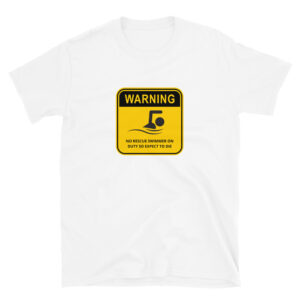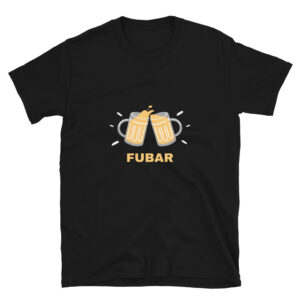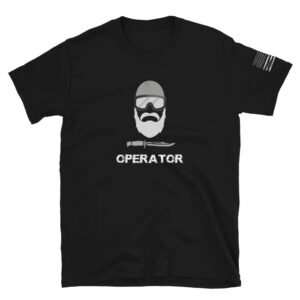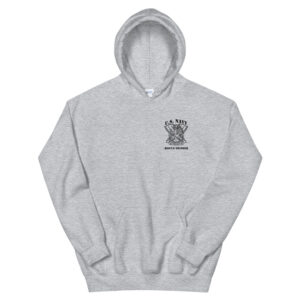Don't miss our flash to bang SALES!
Veteran of WWII in the Pacific Elwood Link
Elwood “Bud” Link shares his story of service during WW2 from Bora Bora to Guadalcanal to Iwo Jima. “And then probably the scariest we all was was out there on that outside destroyer screen at Okinawa when those suicide planes were coming in, and you was at general quarters 24 hours a day. “
Question: And you enlisted when you were —
Answer: July of 1941 — I was 17.
Question: So after Pearl Harbor.
Answer: Before Pearl Harbor.
Question: Oh, that would, be, yeah. July, August, September, October. Did you know there was a war coming up?
Answer: No. I was like Bill. I just wanted to get away from my folks — I was out of high school and didn’t know what to do so I thought what the heck, you know I get paid $21 a month, I might as well join the Navy.
Question: So where did you sign up at?
Answer: Right down here in Wenatchee. And they sent me down to San Diego to the training station. Stayed down there and got into what they called Marker Companies — that marked the clothes. You know, all of our clothes had to be marked. And so twelve of us got stuck into that thing. I actually joined under VFW enlistment program clear back in 1941 and went over to Seattle, signed up, they sent me home for, oh, a little while till they got a company of men then they sent the whole bunch of San Diego. And we got down there and went through the training station and then they shipped us back just prior to — we was supposed to go aboard the old USS Sepulga which is an old tanker and we missed it by one day. The next day they bombed Pearl Harbor. And the tanker was heading for Pearl Harbor towing three barges loaded with dynamite. They were doing a lot of work out there at that time. And they told us after we got aboard it that the admiral on the West Coast told them turn around and get back here, we don’t want you to get sunk. And a ship with three barges strung out behind it takes a long time to turn around. All day long. And they no more than got turned around and heading back to Long Beach and the admiral in Pearl Harbor had more seniority than the one in Long Beach said turn that thing around, we need you out here. So they turned it around and went the other way. And then I went aboard it in, let’s see, January the 18th, 1942, and they loaded it full of oil and we went to Bora Bora. That was the South Seas where all the little girls were — she shouldn’t be here. Because we arrived in the South Seas and we’re all 17, 18-year-old boys, you know, red blooded American males, and here’s these girls walking around on the beach with no tops on. And we’re just dying to get ashore, half of us are even swimming to shore, but the officers knew things we didn’t. That Bora Bora at that time belonged to the French. And the French at that time were notorious for not, you know, really good health programs. And one day I was the coxswain on the Captain’s Gig, nice big covered sail or sea boat, you know. And they called away the boat and I dropped around to the gangplank, here come the doctor and a couple of hospital corpsman and took them over to the beach, planted him on the beach, he had a table with him, and of course us sailors on there, you know, we didn’t know what in the heck’s going on. Well, he was giving these — giving the women on the beach a medical examination. And 19 of them had gonorrhea and the 20th one had syphilis. That’s the reason we didn’t go ashore. But one good thing I’ll say about the US Navy, when we left the South Pacific, those people was in good health. They sent people in there and really made them healthy. But we stayed there in Bora Bora until we — what we were doing was refueling the convoys going between the States and Australia during the first part of the war. The way they where they were transferring a ton of materials to Australia, you know. And so we would fuel up the escorts as they — as the convoy went by the escorts would break off and they’d switch convoys and they’d come in and refuel and go back out and they’d catch up with the convoy and take them which way they’re going. And we’d stay there until we got pretty low on fuel and then they’d have another tanker coming in and we’d go back to the States or back to Panama and load up and come back again.
One night we was anchored there and, oh, I got a lot of stories to tell you. Before this happened there was a Japanese sub come by one day. I mean broad daylight and why, how come he didn’t see us I don’t know because if you look at this island of Bora Bora, the big harbor in here and you can look in both ways. And he sailed right by this thing. Fortunately somebody standing up on deck seen it and, boy, it’s general quarters, you know. We had a couple of six inch guns and some old three inch that might fire the length of the room and no anti-aircraft. And I was the after anti-aircraft guy on the back six inch gun and I had a BAR. I never shot the thing. One day the executive officer came back and he said, “Link” — he was a little bitty short guy but he had a voice like a fog horn. He said, “Link, have you ever shot this gun?” And I said, “No, sir.” Well, it’s time you learned how to do it. Give it to me. Well he didn’t know that I had it on full automatic and those things carried a 30-shot clip. (laughs) He walked up to the edge of the gun tub and touched that thing off and it just — it’ll give 30 shots out just like that. He wound up on his back and the Bosun’s mate, we all stepped away from him. We didn’t want to catch him, you know. He got up. Or, no, he didn’t get up, he couldn’t get up. Bosun’s mate reached down and got the gun and he stood up. He said, “Link, you better take this gun.” The executive officer turned around and walked off and never said a word. I never shot that thing.
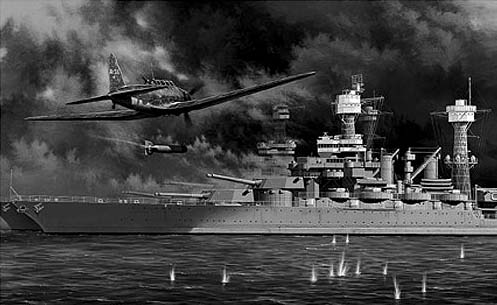
Some incredible stories about the War in the Pacific. Incredible what men like my Uncle they went through
But one night we was about oh, still two-thirds full of fuel and we got an order to leave Bora Bora and steam straight north. Well, to what? We steamed until we got to the equator, and we went ten miles on each side of the equator, just make a big circle, all night long. Well, what are we doing up here? We’re all by ourselves, you know. And the next morning a — we had a Lieutenant Colbert aboard ship that had — they told us later he had 30-30 vision if you understand what that means, and was really strange because he could see things that you couldn’t see with a pair of field glasses. Here coming up over the top of the horizon was this big super structure. And by that time I was a signalman, same as Bill, and I’m up on the big 24-inch arc light and we challenged this thing. And it turned out to be the USS South Dakota heading for Guadalcanal. And anyway she pulled up alongside of us, and the Navy was great for refueling at sea. You now, they’d refuel under way. And she pulled up alongside of us, and I mean, if you ever been alongside of a battle ship, that is a humongus thing, just unbelievable. Here we are on this old tanker. The captain, his name was Goetch, he called down over his loud speaker, said, “We got to make — we’re going to refuel at 12 knots.” And I’ll never forget what our captain said. “Well, if you’re going to steam at 12 knots you’ll have to pull us because we make 9.9 knots downhill with the brakes off.” And this captain — he actually looked down, he said the funniest thing I’ve ever heard. They slowed down to about nine knots and we refueled them. And they had — she had two, three destroyers with her. We fueled those. Of course by the time we filled them up, we were out of fuel, so we headed for the States, or Panama. And went up to Panama and got some more fuel, back down there we went.
And after awhile things kind of slowed down down there and they sent us to Alaska. We made three or four trips to Alaska, up to Kodiak. And the last trip we made up there it was 40 below zero. And of course they issued the officers these great humongus sheepskin coats, beautiful things you know. And I was a signalman up on the bridge. One day I had on every stitch of clothing I owned. You couldn’t keep warm. And we was getting ready to refuel. Well, we heat the oil going up there because it’s just you know, just like sludge, what the regular oil is they use. And this one ensign was standing down there right beside these big flange — we pumped the oil out through 11-inch hoses, great big things. And you had this flange that you had to hook to the — to the pump to, you know, to make the connection. And this little short executive officer came out. He stood there and he was looking at this ensign standing there. He just said to me, he said, “Link, do you suppose that idiot is stupid enough he’s going to stand there when that hot oil thing hits that flange, that flange is going to crack and he’s going to have oil all over him.” I said, “Well, Sir, I think he’s going to stand there.” And he did and it split. He got oil right down the front of this great big coat. Well by that time the executive officer is screaming bloody murder at him. He finally moved away.
Then we came back to — came back to San Francisco to be overhauled and change guns and stuff like that. Typical US sailor, you know, I got — me and another kid went over to the International settlement, which we spent a lot of time over there. Great place for liberty. We decided one night to see how many shots of whiskey we could drink before we fell off the table. Well we both woke up walking down the streets, or the highway, outside of Vallejo, California. We didn’t even know how we got there. And, of course, by the time we got sobered up, turned around and what are we going to do? We decided oh the heck of it, we’ll just go AWOL and go home. We was getting sick of the war anyway. So we did. Went up to — I had a sister living over in Everett. We knew that the — the sheriffs and everything was looking for us in our home town so we didn’t go there. He lived in Pasco. And so went up to Everett and stayed with my sister for two or three days and finally run out of money and went down to Seattle to the Federal Building, the big Naval recruiting place there, and turned ourselves in. Went in there and the guy says I don’t want you. Well, what are we supposed to do. I don’t give a damn what you do, get the hell out of here. Well, we walked back outside (laughs). I guess they don’t want us. So Navy chief came along, and he says — cause he could tell by looking at our blues and stuff, we was crud, grungy as the dickens. He said you two guys over the hill? We said yeah. He said, well, I’ll give you enough money to get to Bremerton. So we went over and turned in to the Navy yard over there. Those Marines knew what to do with us. We — I stayed there for, oh, a couple months, and from there I got shipped down to New Caledonia and spent four months on the signal tower in New Caledonia. Went through my first typhoon. And decided I wanted out of there, you know, war was up in Guadalcanal. I wanted to go up there, where the fighting was. And here come this old USS Tracy and there wasn’t very many destroyers coming in. I had to be a destroyer man, I wanted on a destroyer. Well, here come the Tracy and I thought well that’s the closest thing to it even if it was built in 1919. And had been converted into a mine lighter. And at that time they was about four of them down there — four of that class. And they spent all their time running back and forth from New Caledonia to Guadalcanal hauling aviation gas to the flyers on Henderson Field. Well the way they done it, they’d load these 50 gallon barrels in the mine tracks and ship us to Guadalcanal. Well the first time we done this I thought everybody had went nuts. They cranked up the RPM’s on that old can and headed right straight for the beach just as hard as she would go. Well, she could do about 32 knots. And I’m — I’m standing, you know, what are you doing. Kept getting closer and closer and pretty soon the captain says “All right, throw the barrels over.” And signal up full speed astern. Well, what would happen is when the ship was going that fast forward, when she went into reverse, the prop wash would wash these barrels right up on the beach. And I mean I thought they stuck the bow right up on the beach. But like Bill said there, we spent most of our time cruising around out there in Iron Bottom Bay and when night fall came, you got out of there, because that’s when the Japs come down. But there was dog fights going on all the time, just constantly, and we were forever picking aviators out of the water. Most of them American. The Japs are just shooting the living daylights out of them. And then one night we went back down to New Caledonia and loaded up mines. Eighty mines we could put on this old ship. Well there was three of us. They sent us up north of Guadalcanal that night, we went around the back, lower side of it, came around the other way so the Japs wouldn’t see us, and laid a big minefield at the north end of Guadalcanal because that’s when the Tokyo Express was bringing in all the troops and everything, every night. And there was two — one PT boat about 20 miles north of us, as a lookout. And like Bill’s mentioned, the phosphorous down there is unbelievable. But that’s the blackest night you ever seen. Hold your hand up here you can’t even see it. So we’re up there and pretty soon in plain language over the TBS, this voice comes on and says, “I don’t know about you guys, but we are getting the hell out of here. Something is right behind us.” Well, we could — you could hear those PT boats. The motors were just loud. And here he come. So the commander of this mine laying group, he — he made us all stop. Well, of course when you stop, there’s no phosphorous, see. And here was a couple of Jap destroyers right behind this PT boat. The first part of the war, the Jap destroyers were beautiful. They were big and beautiful and they were outrunning the PT boats. They were faster than they were. But anyway we just sit there and soon as the destroyers went by, we turned around and went the other way. We was on these old four stack destroyers that, they didn’t have enough armament even to be in a battle with a Jap destroyer so we hid.
The normal procedure was during the day, we would go over and go way back up the river in, over there, Florida Islands, and hide. And we would go back up in there so far that the first ship would put her bow up on the beach and then everybody tie together and we’d pull each other back off.
Question: I’ve got to interrupt you a second because they’ve called you to work. Does that mean you’ve got to go right —
Answer: Well, give us about five minutes, I can do this quick.
Question: Okay.
Answer: From there we went to — we went back to the States and rebuilt the — changed all the armament on these old four stackers, took the four inch guns off, put high elevation three inch, put a twin forty on the back of it. And fortunately for us the — the commander of our ship was a relative of the admiral in charge of San Francisco. So we got on the milk run. We’d go to Pearl Harbor with a convoy and then back to San Francisco. We never sobered up. I mean we was just — (gestures) — back and forth. And uh, until finally one time we got direct orders from the head of the mine laying group to get our butts out there. Well, we got right in the middle of that little typhoon where Halsey and all his destroyers and everything turned over. Well, unfortunately I seen one of them. And I was standing aboard — I’d just come off watch and we was right in the middle of this typhoon — we knew there was ships all over the place but you couldn’t — the only way you could see them was just run into one. I mean there was ships going in every direction. There was actually three task forces in the middle of that. There was Halsey’s Task Force 38, there was a big refueling task force, plus this mine task force. We was heading for the Philippines. And it was really, really strange. And I’d just come off watch and I was standing down behind the bridge when I heard — I looked over to the — on the port side and here was this destroyer upside down, and there was guys in the water all around it, screaming bloody murder. And we was going the other way. And I heard the captain holler hard left rudder. And I thought to myself, oh, not in this sea. Anyway it — she went hard left rudder, and as God is my witness, this is the truth, I was standing flat-footed on the deck. And when she rolled over one way I reached forward and patted the deck with my hand without moving my feet. When she rolled back, come back, I turned behind me and done the same thing back here. The officer said later she rolled 61 degrees one way and 59 the other. Now these old four stackers was designed to roll 64 degrees. So we — we was fortunate. We came back.
But from there we went down to the Philippines, went and got involved in the battle of — oh, the invasion of Iwo Jima. Went up there. We was up there three days before the — anybody else got there. We had a lot of — wasn’t no big deal. We — we was parked when they raised the flag on MT. Suribachi, we was sitting down below and looked right up at it. Seen them do it.
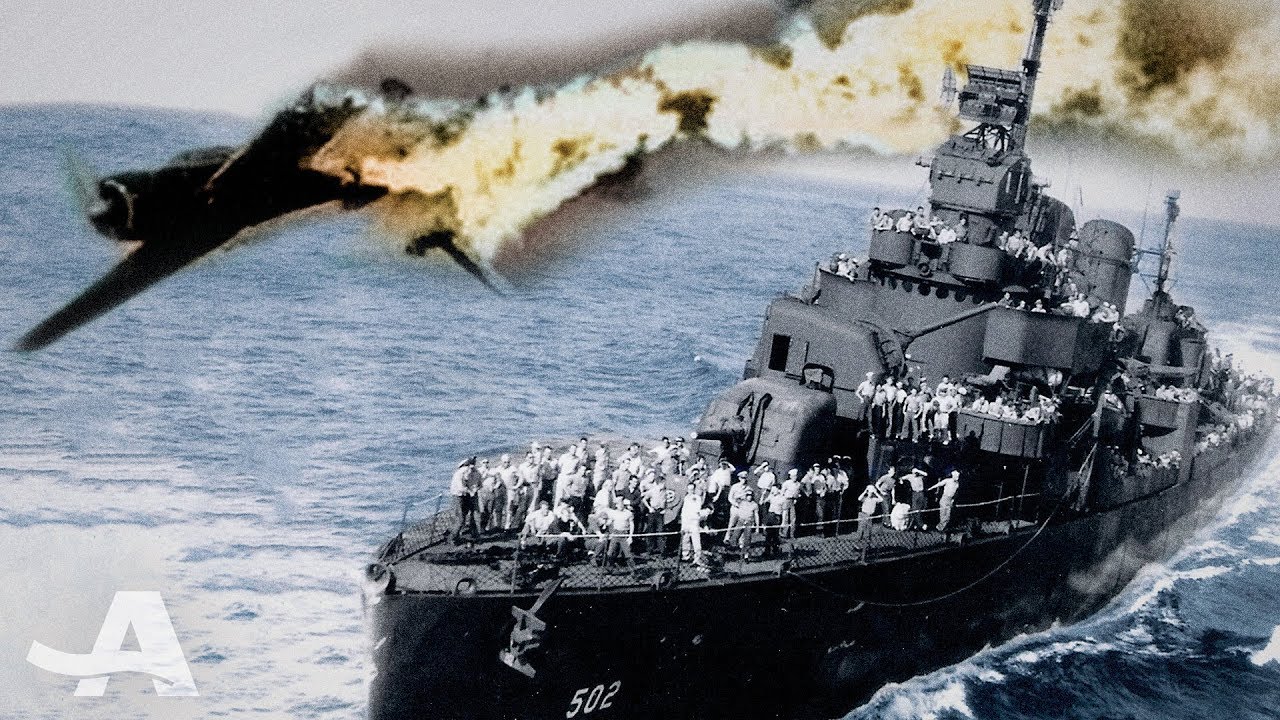
From there we went back down to the Philippines again, and then we went back down to — oh, we went up to Okinawa on that invasion. In between times we was into the Philippines and Saipan and Tinian and all of those other places. I’ve been all over the South Pacific. I mean, Rabaul and, well not into Rabaul but, Bougainville, Guadalcanal, all those islands that we hopped up, you know. And then we went up to Okinawa. We was up there two weeks before the invasion started. Now that was pretty hairy. That’s when we first started running into the suicide planes — Kamikazes. And every night we’d sweep mines during the daytime and then we’d go over and anchor in Kerama Retto — these little islands over to the side there. And it didn’t take us very long to learn that the Japanese would come sailing down through there at night right on the water and if they’d hit a ship, fine, you know. And so we’d anchor off outside and they’d come right down through the middle of us. Well, we was only there a little while and we discovered there was a Jap detachment of soldiers on the island. And them buggers were out swimming around. And they swim down until they’d find an anchor chain and crawl up the anchor chain and — so, boy, we got to where we — you didn’t sleep at night. You was on watch all night long. If you seen anything suspicious in the water, turn the search light on them. The minute the search light would hit it, somebody’d be shooting at it, whether it was a box or what not, doesn’t matter. But we spent the whole invasion of Okinawa we was there. They finally — the Japs destroyed so many US destroyers that they even put us out on — on that outside destroyer screen, which was 10 miles, about 15 or 20 miles away from Okinawa, to shoot down these Jap planes. And they’d come right — the propellers would be picking up water, they’d be down there that low to get up underneath the radar screen. And they’d come screaming down through there. We was in company of a brand new destroyer and a destroyer escort and us. We had the least fire power so they stuck us in the middle. (laughs) But they would aim for these new destroyers and sure enough the one in front of us got just, clobbered one day — just — didn’t sink but it should have, yeah. And we was on — you could only stand it out there because you was on general quarters 24 hours a day. You didn’t get off. No. You ate cold sandwiches and drank hot coffee when they could make it and that was it.
We came back from there and back down to Ulithi and picked up a mine, er — this — and we. Then we went over to Tacloban. The war was over. Or while we was in Tacloban, why the Armistice came up. And they sent us back to Ulithi, we picked up a mine sweeping group and we went up to Japanese Inland Sea and cleaned out all the mines in the entrances to the Japanese Inland Sea. We come closer to getting killed there than we did during the war. I mean, sweeping mines is a — not a very nice thing to be doing. And we was — I was on the first — the USS Tracy was the first ship into Nagasaki after the bomb was dropped. And we went over on the beach to help tie up this big hospital ship. See the Japs had about four or five great big prisoner of war camps around Nagasaki. And after the bomb was dropped, they just turned them loose. They just let them go. And they didn’t have no food, no nothing. So the American — the Navy sent this big hospital ship, the USS Haven in there, to pick up all these prisoners — ex-prisoners, yeah. And oh, God, that was terrible.
These are stories of Prisoners of War who were captured by the Japanese.
From there we went to — oh, no, from there … let’s see. Oh, from there they started adding up your points, how many years you’d been in the service, you know how much time you had. And finally it came my turn. But here we was up in Japan. We’d went to Hiroshima and walked around on the beach up there, and consequently I wound up with a bunch of pre-cancerous skin lesions all over my head.
Question: What was that like?
Answer: Like nothing.
Question: I mean when you walked in — when you looked at that?
Answer: Just utter devastation. Yeah. Few concrete buildings still standing, that’s all. Nagasaki was worse. Course there’s two different bombs. One was an atomic bomb, one was a hydrogen bomb. Nagasaki was kind of like Seattle, built on low rolling hills with a beautiful big harbor in it. And the bomb, I think that bomb exploded in the air. And nothing there but big red boulders. We found out later that all the houses were built with red bricks. That’s where the red boulders came from. But just nothing.
But from there we got — we got aboard this APD, and got back to the States and got discharged. That was in 1945. So I spent about four years, three months, 19 days. Still remember my serial number, 3860259. (laughs) But it was, you know, like Bill and I, we could sit up here and talk and tell you stories about things that happened for days, actually. And —
Question: I have three quick questions — I know you’re on a tight schedule.
Answer: Okay.
Question: Is there a message, or what message would you like to leave for future generations about World War II?
Answer: Don’t have another one. Do everything you can to prevent it, yeah. Of course you’ve got to realize that World War II turned loose on the world a whole bunch of kids — that’s just what we was kids. We didn’t know any better, you know, we was out there to have fun, you know. And far as being scared, good golly, yes, petrified, you know. And I mean being in an air raid is not fun. It’s not fun, no. And then probably the scariest we all was was out there on that outside destroyer screen at Okinawa when those suicide planes were coming in, and you was at general quarters 24 hours a day. You never — you didn’t — you could only spend about three or four days out there and then they’d relieve you, as well they could. But they were pulling destroyers out of — even out of Task Force 38, they were just completely running out of them. And it would be so — the Jap planes would be so thick at night that the anti-aircraft going on over the landing area where all the landing ships were tied up, you could get up there and walk around on it. See, a 40 millimeter designed to burst at, what is it, 4000 feet — something like that. And they would just be going off everywhere. Yeah. And no, it’s — it’s kind of crazy because when you realize that a lot of things that went on out there in World War — even in World War II was ridiculous. One of the dumbest things that I ever seen was building battleships after they didn’t need them. The last big battleship engagement was in Guadalcanal when the — the USS Washington sunk the Japanese Kirishima, that’s the last time that a battleship fired at another battleship. And yet the United States kept on building them. They didn’t need the dumb things. All they needed was more aircraft carriers. Stop and think that at the end of World War II we had 18 aircraft carriers and the Japs didn’t have any. After the Battle of Midway the Japs were no longer a force to be reckoned with. They couldn’t do anything. But, a lot of that is really should be laid to our USS submarines. They sunk an unbelievable amount of Japanese ships. You couldn’t go up — the Japanese Inland Sea is just like that, just a gigantic inland sea, and there was ships sunk everywhere. Jap battleships, cruisers, and all done by subs.
Question: Now one other question that I asked Bill and the other gentlemen so far. Out of your whole life, your time in the service was a very minimal part.
Answer: Yeah.
Question: The camaraderie that was developed — the bond. Did you come into that also?
Answer: Oh, yeah, yeah, yeah. Like Bill says, always, when my wife and I — I always — our oldest son works in the Veteran Administration in Washington, D. C. So he flies his mom and dad wherever we want to go. And you always wear a hat like this and you always look for another person, yeah, hm-hmm.
Question: Did you lose friends?
Answer: Not aboard the ship I was on, no.
Question: So you were lucky in that way.
Answer: Yeah.
Question: And you talked about, let’s see, the raising of the flag and all that. Of course now, for my generation, that’s the history that we know. Did you realize when — while you were out there fighting the war that you were a part of history or was that —
Answer: No. We knew that history was being made, but the every day — you know, every day things you had to do, you know, sleeping and eating and staying alive, was more important than thinking about whether or not you’re part of history or something like that, yeah.
Question: Did life become every day? I mean, did it become a job eventually or —
Answer: You bet, yeah, yeah. Especially when you’re in the middle of an invasion, yeah. We was up there in the invasion of Iwo Jima, and of course we was the sole destroyer that didn’t have good supplies and stuff aboard. So we had to be re-provisioned every week or so by another ship. Well, we was relieved off a picket duty one day and went over there in the anchorage looking for the ship that was supposed to re-provision and she wasn’t there. And nobody knew where she went. Well, come to find out, she’d been hit by a suicide plane and went back to Ulithi. But for some strange reason, communication got balled up. We ate spaghetti for three, well, let’s see, 21 days, macaroni, spaghetti. Now that — uh,is not good. (laughs) No.
Question: (laughs) Let me get you unmiked.
(Courtesy of WWII Voices in the Classroom, www.wwiihistoryclass.com)
The Things Our Father’s Saw is other first hand accounts of the “war over there” and Rick Atkinson’s Pulitzer Prize books on WWII like the Guns Last Light (a three part series) are simply amazing. All four books are definite must reads in my opinion.
The Frontlines uses referral links cover the web hosting, research and gathering of stories to preserve military history and humor. The items linked to are my personal favorites of stuff or things I have read over the years. Thank you for your support!
Popular Products
-

Warning No Rescue Swimmer
$16.50 – $22.50Select options This product has multiple variants. The options may be chosen on the product page -

FUBAR
$19.50 – $28.00Select options This product has multiple variants. The options may be chosen on the product page -

Special Operators
$23.50 – $31.50Select options This product has multiple variants. The options may be chosen on the product page -

Rescue Swimmer Definition Hoodie
$42.00 – $54.00Select options This product has multiple variants. The options may be chosen on the product page

